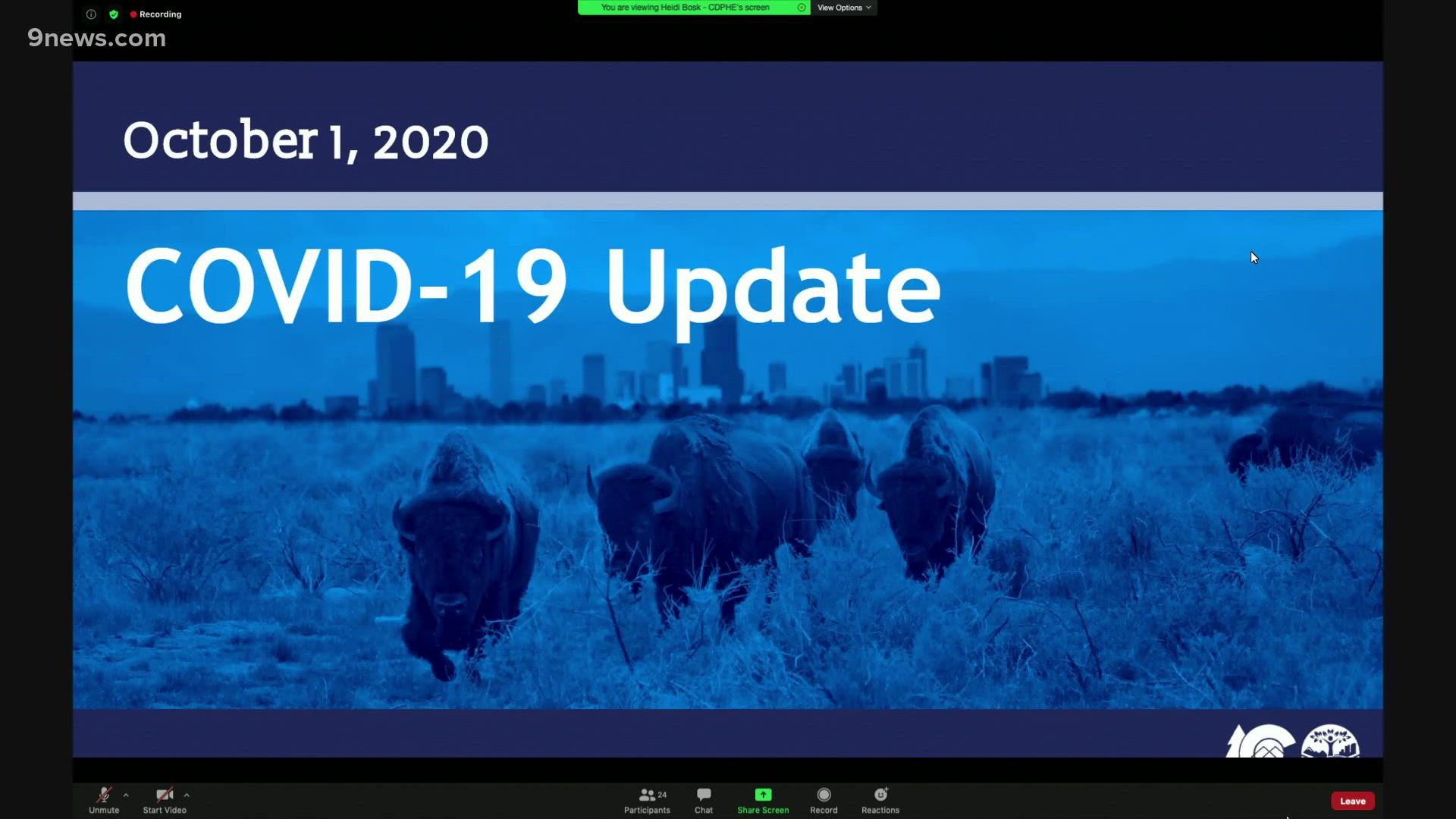COLORADO, USA — Colorado health officials urged people to get a flu vaccination as the state moves toward the influenza season with the ongoing COVID-19 pandemic still taking place, and announced it has secured thousands of additional vaccines for uninsured and underinsured adults at children.
Experts from the Colorado Dept. of Public Health & Environment (CDPHE) spoke at a Thursday news conference and Q&A.
Heather Roth, immunization branch chief at CDPHE's Division of Disease Control and Public Health Response, said Colorado typically receives about 5,000 publicly-funded flu doses, but this year secured an additional 293,600 publicly-funded flu doses for the state's uninsured and underinsured adults.
CPDHE also secured an additional 35,300 publicly-funded pediatric flu doses in addition to its original order of 278,010 pediatric flu doses.
The publicly-funded doses are free for those with Medicare, Medicaid, CHP+ and more other insurance at participating providers.
Individuals can find a provider to obtain a flu shot at VaccineFinder.org.
'Two respiratory viruses hitting us at the same time...is a big deal'
Dr. Eric France, chief medical officer at CDPHE, said it is imperative that people get a flu vaccination, particularly when hospitals are also grappling with the COVID-19 pandemic.
He highlighted two facts:
- Tens of thousands of Americans died from the flu in 2019-2020.
- More than 3,500 Coloradan were hospitalized with the flu last season.
"The respiratory season is a series of bad illnesses caused by viruses," France said. "We know as doctors [that] we're going to get pretty darn busy... Having two respiratory viruses hitting us at the same time...is a big deal."
France also said getting the flu and COVID-19 at the same time could lead to serious complications, particularly for higher-risk people such as seniors, young children, pregnant women and those with some chronic health conditions like asthma, diabetes and heart disease.
"Flu cases could add to the demands on hospitals if they face a surge in COVID-19 and influenza causes...while also complicating care for hospital patients," he said.
Flu season in the Southern Hemisphere vs. flu season in the U.S.
Dr. Sean O'Leary, professor of pediatrics at the University of Colorado Anschutz Medical Campus/Children’s Hospital Colorado, also discussed the mild influenza season seen in the Southern Hemisphere.
The flu season in that part of the world would have typically ramped up in March, according to an article in Scientific American, but was virtually nonexistent. Some experts said that may have been because strict regulations — such as stay-at-home orders, face coverings and social distancing — were imposed there since it was also around the time COVID-19 began spreading around the world.
O'Leary cautioned against assuming a mild flu season will occur in the U.S., saying most areas are not under the same kinds of restrictions now.
He also said there were high influenza vaccination rates in Southern Hemisphere.
"So that may have played a role," he said.
Is it possible to distinguish between COVID-19 and the flu?
It's not possible to tell the difference between COVID-19 and the flu without a test.
Influenza and COVID-19 have such similar symptoms, individuals may need to get tested to know what's making them ill.
Body aches, sore throat, fever, cough, shortness of breath, fatigue and headaches are symptoms shared by the two.
One difference? People with the flu typically feel sickest during the first week of illness. With COVID-19, people may feel the worst during the second or third week, and they may be sicker for a longer period.
Another difference: COVID-19 is more likely than the flu to cause a loss of taste or smell. But not everyone experiences that symptom, so it’s not a reliable way to tell the viruses apart.
That leaves testing, which will become more important as flu season ramps up this fall.
> The Associated Press contributed to this report.
SUGGESTED VIDEOS: COVID-19 Coronavirus

